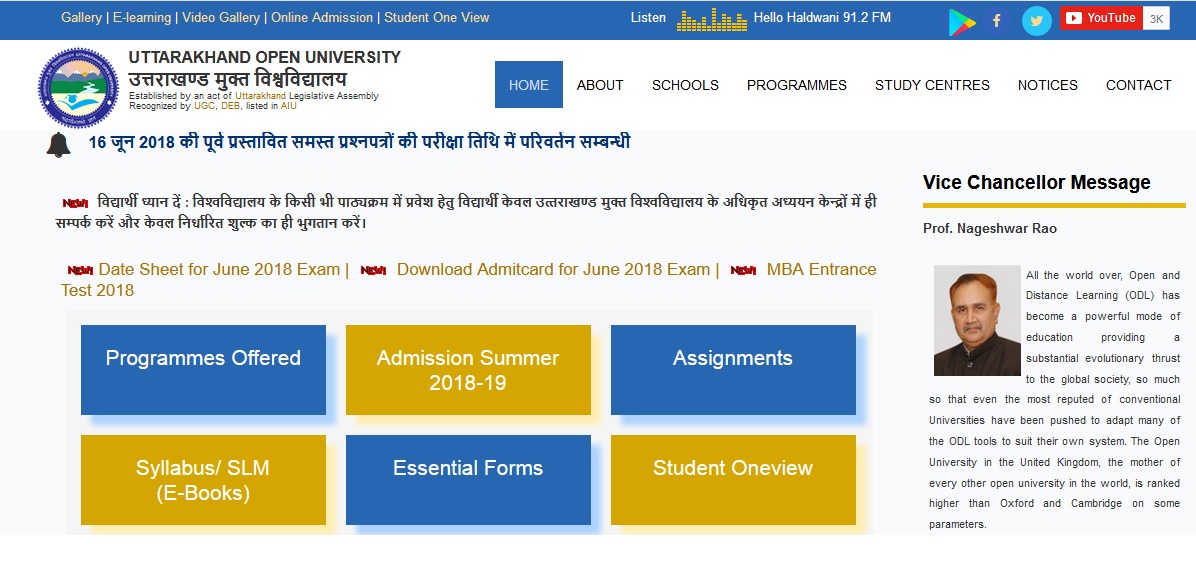EHI01 Modern India B.A Question Bank : uou.ac.in
Name of the University : Uttarakhand Open University
Degree : B.A
Department : History
Subject Code/Name : EHI01 Modern India
Year : I
Document Type : Old Question Papers
Website : uou.ac.in
Download Model/Sample Question Paper : https://www.pdfquestion.in/uploads/uou.ac.in/4487.-EHI-01.pdf
UOU Modern India Question Paper
B.A. I Year (old) / B.T.S. III Year Examination- 2012
Time : 3 Hours
Max. Marks: 70
Related : Uttarakhand Open University HI02 History of Uttarakhand B.A Question Bank : www.pdfquestion.in/4478.html
Note : The Question paper is divided into three sections A, B and C. Give the answer according to directions given for each section.
Section- A
(Long Answer’s Question)
Note : Answer any two Questions. Each Question carries 15 marks.
Explain the nature of the revolt of 1857.
Discuss about the partition of Bengal and the Swadesi movement.
Throw light on the causes of the first World War.
Write a note on the development of Communalism in India.

Section- B
(Short Answer’s Question)
Note : Answer any four Questions. Each Question carries 5 marks.
4 x 5 = 20
Briefly discuss the following :
Imperialism
Indian National Congress
Marxism
Khilafat Movement
Russian Revolution
Social reforms during Nineteenth Century.
Gadhar Party
Quit India Movement
Section- C
Objective Question (Compulsory)
Note : Answer all Questions. Each Question carries 1 mark.
10 x 1= 10
Write True/False against the following
Indian National Congress was founded in 1885.
Arya Samaj was founded by Swami Vivekananda.
Muslim League was established in 1910.
Civil Disobedience Movement was held during 1930-34
Subhas Chandra Bose fought the case of the Soldiers of Azad Hind Fauj.
Choose the correct alternative :
Who among the following was the first President of Indian National Congress.
A- W.C.Benrjee B- Dada Bhai Nauroji C- Firoz Shah Mehta D- Moti Lal Nehru
In which among the following years was Bengal partitioned.
A- 1904 B- 1905C- 1906 D- 19078
In which among the following places did Mahatma Gandhi take his last breath.
A- Porbandar B- CalcuttaC- Delhi D- Noakhali
In which among the following years did Quit India Movement organize.
A- 1940 B- 1941C- 1942 D- 1943
Who among the following was associated with the Chittagong Armoury raid-
A- Chandra Shekhar Azad B- Bhagat Singh
C- Surya Sen D- Batukeshwar Dutt
B.A.-10 (Bachelor of Arts) History First Year, Examination-2015 :
HI-01 :
Time : 3 Hours
Maximum Marks : 60
Note : This paper is of sixty (60) marks divided into three (03) sections A, B, and C. Attempt the questions contained in these sections according to the detailed instructions given therein.
Section – A : (Long Answer Type Questions)
Note : Section ‘A’ contains four (04) long-answer-type questions of fifteen (15) marks each. Learners are required to answer any two (02) questions only. (2×15=30)
1. Discuss the salient features of Harappan civilisation.
2. Describe the political, social, economic and religious condition of Rigvedic period.
3. Give a critical estimate of Moryan administration.
4. Estimate the achievements of Samudragupta.
Section – B : (Short Answer Type Questions)
Note : Section ‘B’ contains eight (08) short-answer-type questions of five (05) marks each. Learners are required to answer any four (04) questions only. (4×5=20)
1. Discuss about the various sources of Indian History.
2. Discuss about the teachings of Buddhism.
3. Narrate the chief characteristics of Ashoka’s Dhamma’.
4. Describe about the various achievements of Pushyamitra Sunga.
5. Why has the Gupta period regarded as the golden period of Indian History ?
6. Describe the chief characteristics of Chalukyan art and artitecture.
7. Write a short note on the local administration under the Cholas.
8. Describe the tripartite struggle among Palas, Pratiharas and Rashtrakutas.
Section – C : (Objective Type Questions)
Note : Section ‘C’ contains ten (10) objective-type questions of one (01) mark each. All the questions of this section are compulsory. (10×1=10)
1. Chief charecteristics of Harappan Civilisation was
(a) Town Planning
(b) Trade
(c) Art
(d) Agriculture
2. The chief deity of Vedic period was
(a) Indra
(b) Agni
(c) Varuna
(d) Soma
3. Who was the 23rd Tirthankar of Jainism ?
(a) Rishabhdev
(b) Bhadrabahu
(c) Parsvanath
(d) Mahavir Swami
4. Who has been termed as the Napolean of India ?
(a) Chandragupta I
(b) Ashoka
(c) Samudragupta
(d) Kanishka
5. Who was the author of Meghdoot ?
(a) Kalidasa
(b) Samudragupta
(c) Harshavardhan
(d) Banabhatta